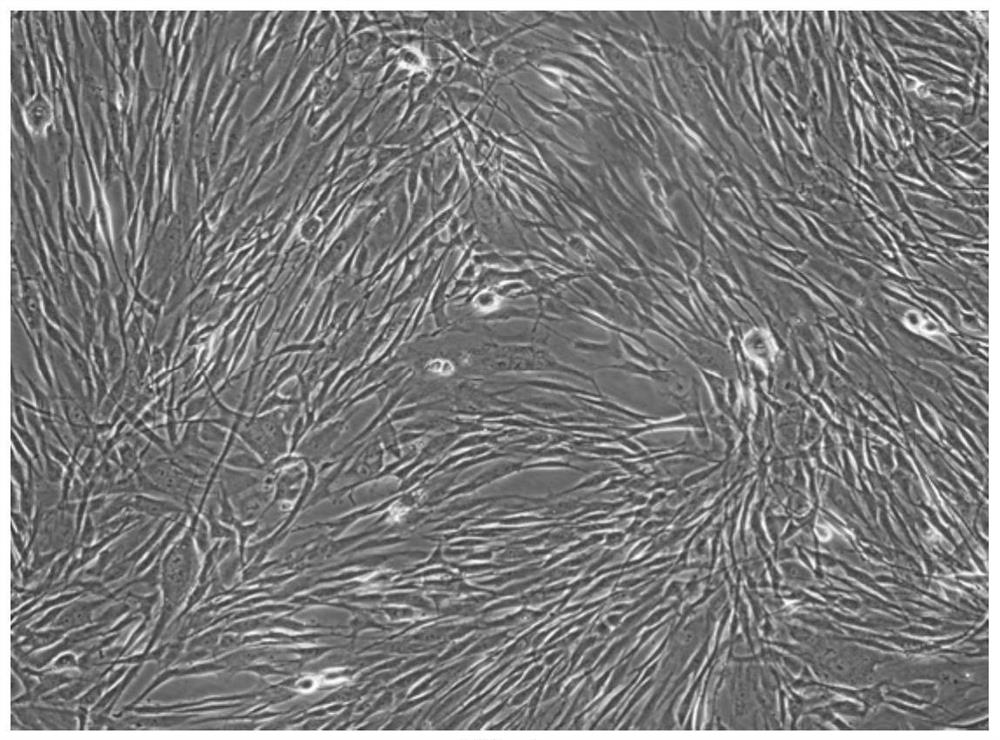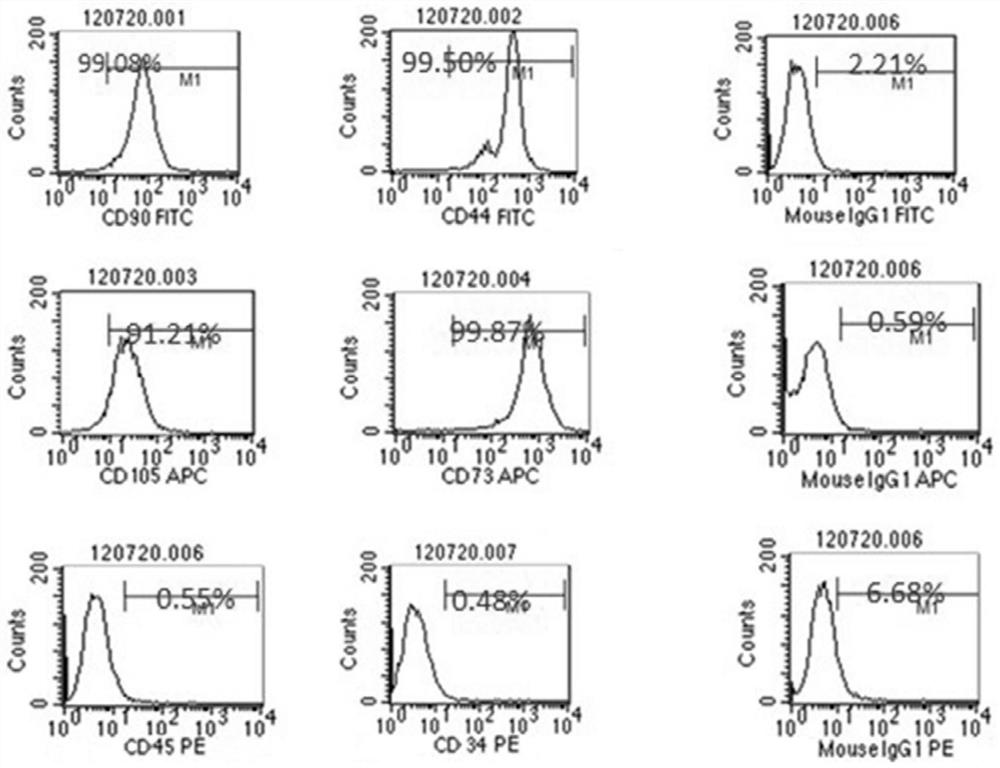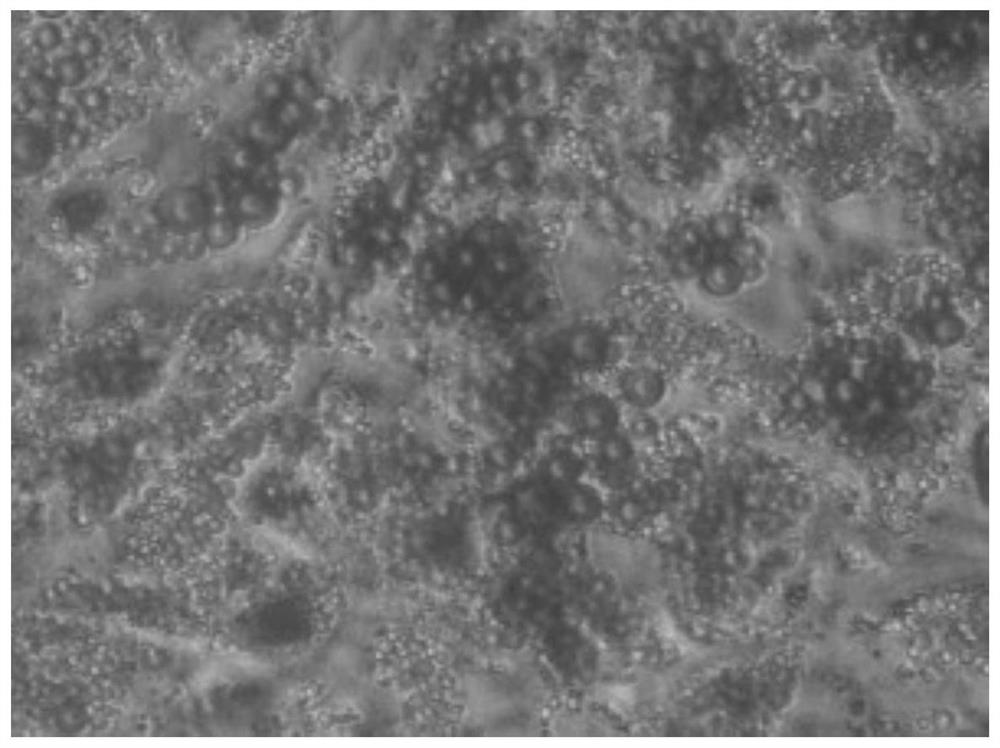Isolation and culture method of adipose stem cell
A technology of adipose stem cells and culture methods, which is applied to animal cells, vertebrate cells, bone/connective tissue cells, etc., can solve the problems of increasing the cost of collagenase, and achieve the effect of promoting rapid proliferation, less dosage, and high separation efficiency
- Summary
- Abstract
- Description
- Claims
- Application Information
AI Technical Summary
Problems solved by technology
Method used
Image
Examples
Embodiment 1
[0038] Example 1. Obtaining a new collagenase and its expression, purification and activity identification
[0039] 1. Obtaining collagenase
[0040] According to the collagenase gene sequence published by NCBI, a pair of primers (as shown in Seq ID No.7 and Seq ID No.8) were designed, and Bacillus cereus (Bacillus cereus) strain ACCC10263 (purchased from China Agricultural Microbiological Culture Collection Management Center) genomic DNA as a template for PCR amplification, electrophoresis and recovery of about 3.0kb bands, sequenced to obtain the nucleotide sequence Seq ID No.1 of the collagenase-encoding gene, and the amino acid sequence of collagenase encoded by it It is Seq ID No.2.
[0041] 2. Construction of engineering bacteria
[0042] The collagenase coding gene shown in Seq ID No.1 was connected to the multiple cloning site of the expression vector pET28a to obtain the recombinant expression vector Z1. The recombinant expression vector Z1 was transformed into Esc...
Embodiment 2
[0071] Embodiment 2, the acquisition of mutants and their expression, purification and activity identification
[0072] 1. Acquisition of Mutants
[0073] According to the functional region of collagenase, design some collagenase mutants that have 2-3 amino acid substitutions at specific positions in the amino acid sequence Seq ID No.2 of the collagenase obtained in Example 1, wherein four mutants (A, B, The mutation site information of C and D) is as follows:
[0074] Mutant A replaces amino acid d(Asp) with m(Met) at position 254 of the collagenase Seq ID No.2 sequence, and replaces amino acid r(Arg) with g(Gly) at position 255; the mutation The amino acid sequence of body A is shown in Seq ID No.3, and the nucleotide sequence of its encoding gene is shown in Seq ID No.4;
[0075] Mutant B replaces amino acid k (Lys) with l (Leu) at position 382 of the collagenase Seq ID No.2 sequence, and replaces amino acid e (Glu) with p (Pro) at position 383;
[0076] Mutant C replace...
Embodiment 3
[0089] Embodiment 3, the application of mutant A and D in the separation and cultivation of adipose stem cells as collagenase
[0090] 1. Influence of the amount (concentration) of mutants A and D on the separation effect of adipose stem cells
[0091]Using the mutants A and D prepared in Example 2 as collagenases, the adipose stem cells were separated according to the following steps, wherein the digestion time was the same, the amount (concentration) of collagenase added was different, and commercialized type I collagen Enzyme (invitrogen, Cat. No. 17100-017) as control (CK1):
[0092] (1) Negative pressure liposuction collects human adipose tissue, divides it into 100mL portions, sterilizes the surface of each container containing adipose tissue, and carefully transfers it to a biological safety cabinet. After standing still, the swelling fluid and adipose tissue Layer, and remove the lower liquid and upper layer of grease;
[0093] (2) Add an equal volume of normal salin...
PUM
 Login to View More
Login to View More Abstract
Description
Claims
Application Information
 Login to View More
Login to View More - R&D
- Intellectual Property
- Life Sciences
- Materials
- Tech Scout
- Unparalleled Data Quality
- Higher Quality Content
- 60% Fewer Hallucinations
Browse by: Latest US Patents, China's latest patents, Technical Efficacy Thesaurus, Application Domain, Technology Topic, Popular Technical Reports.
© 2025 PatSnap. All rights reserved.Legal|Privacy policy|Modern Slavery Act Transparency Statement|Sitemap|About US| Contact US: help@patsnap.com



